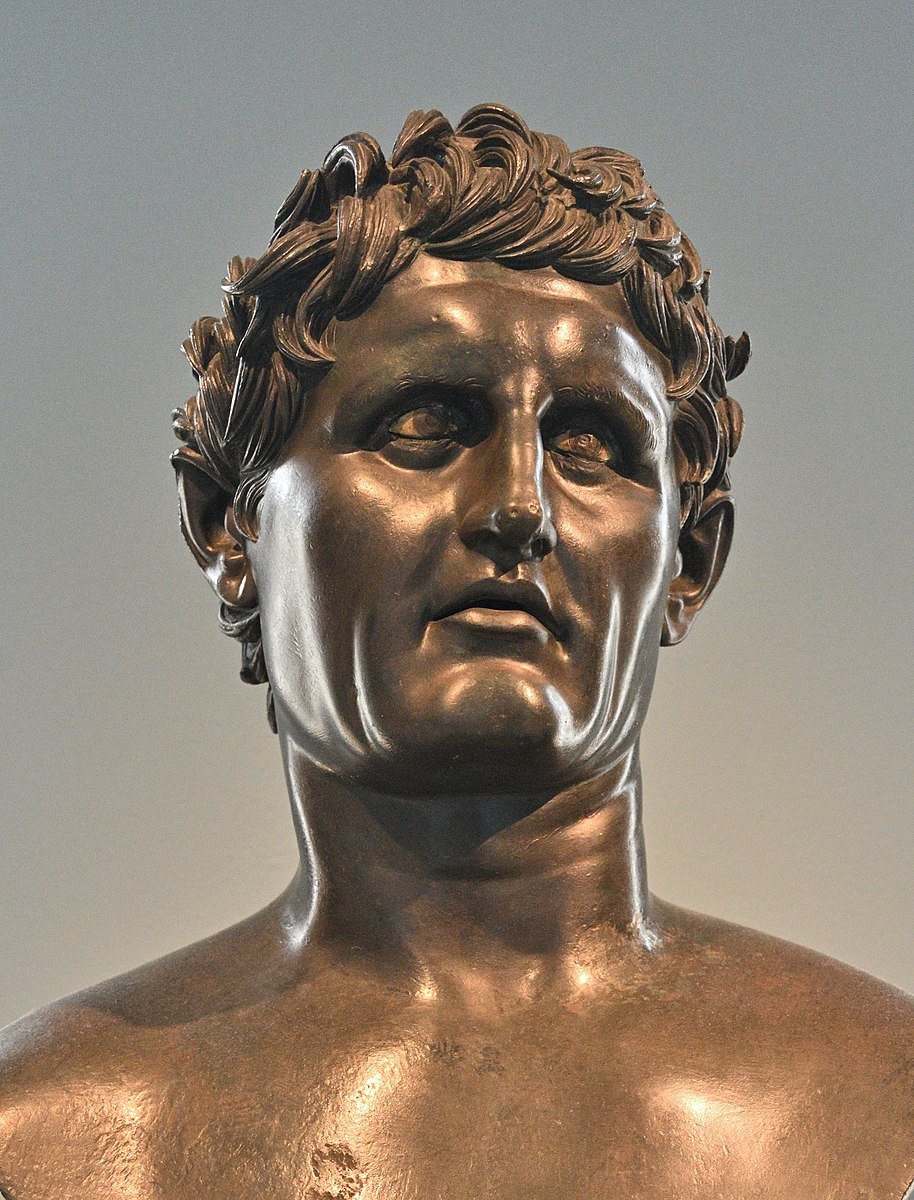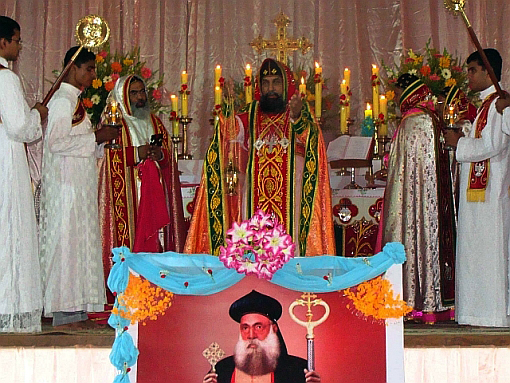
Indians have a special connection with the ancient city of Antioch. The city, now part of Turkey, was renamed Antakya but their connection with it is fleeting at best when compared to the Greeks and Syrians, taking a chronological overview.
Originally called Antiocheia (Greek:Αντιόχεια), it ranked among the most prominent Hellenistic cities of antiquity. Antioch was the primary residence of the Seleucid kings and the capital of the Roman province of Syria, as per Michael Blömer, of the Centre for Urban Network Evolutions, Aarhus University. Founded by a successor of Alexander the Great, Seleucus Nikator I in 300 BC, it was the center of Seleucid Kingdom till 64 BC.

Seleucids had a powerful empire, but they were defeated by an even more powerful enemy in the field of battle, the Mauryas. The Mauryas led by Sandracotta (Chandragupta) who as per ancient Greek historian Plutarch, had advised Alexander to advance beyond the Beas and attack the Nanda emperor Xandrames, who was so unpopular that his people would rise in support of an invader. Though Alexander returned from India, Sandracotta defeated Xandrames and founded the first Indian empire, the Mauryan empire.
Sandracotta Defeats ancient Greek king Seleucus

Later Sandracotta fought a long battle against Seleucus Nikator I, finally defeating him around 305 B.C., and a treaty was signed.
According to this treaty, Seleucus Nicator I ceded the trans-Indus territories – namely Aria (Herat), Arachosia (Kandahar), Gedrosia (Baluchistan) and Paropamisadae (Kabul) – to the Mauryan Empire, in exchange for which Sandracotta made a gift of 500 elephants to Seleucus.
Seleucus also gave his daughter in marriage to the Mauryan prince; it is supposed that Chandragupta married his daughter (a Greek Macedonian princess) to formalize an alliance. The name of Sandracotta’s Indian wife was Durdhara and his Greek wife was Helena.
Sandracotta Connection with ancient Greek city of Antioch
Sandracotta’s son Bindusara, named Amitrochates of Strabo, had friendly relations with Greek King Antiochus I of Syria. Deimachus was the Seleucid ambassador sent to the court of Amitrochates by this Greek king.
It is known from the ancient Greek accounts that Amitrochates requested the King Antiochus I Soter, who was the son of Seleucus Nikator, to buy and send to him sweet wine, dried figs and a learned philosopher.
The king wrote back: “We shall send you the figs and the wine, but in Greece the laws forbid a sophist (a man of wisdom) to be sold”. However, he sent an ambassador named Daimachus to the court of Bindusara. Amitrochates’ son Basileus Piodasses (Ashoka) became the third Mauryan emperor. He became a Buddhist later in life, and worked hard to spread the faith; in Buddhism, one of the most missionary religions of the world, we find inscriptions from the time of the great Emperor Ashoka — recording how missionaries were sent to Antioch.
Indians’ Christian Connection with ancient Greek city of Antioch

Christianity was brought to India by the Apostle Saint Thomas. For centuries the metropolitan heads of the Thomas Christians were known as the apostolic successors of St.Thomas, the founder of the Indian church.
The Indian Church established by Apostle Saint Thomas, got organized and prospered with the arrival of a group of Syrian Christians (Knanaites) from Edessa in AD 345. Under the leadership of these Antiochean missionaries, the Church in Malankara (Kerala) adopted the rites & liturgies of the Syrian Church of Antioch and became a part of that ancient Patriarchal See.
Thus the early Christian converts (St.Thomas Christians) along with the new Christian settlers (Knanaites), came to be called ‘the Syrian Christians’. The Church in Malankara continued to be under the jurisdiction of the Patriarch of Antioch, and his subordinate in the East, the Catholicos/Maphriyono, until the arrival of Nestorian bishops in 1490.
The Constitution of the Syrian Orthodox Church of Antioch states that it is One Holy, Universal and Apostolic Church, whose Apostolic See was established in Antioch by Saint Peter, the chief Apostle, in the year 37 A.D.
Its present headquarters is in Damascus, Syria, while the headquarters of the Catholicate of the East is in Kerala. This latter covers all the Syrian Orthodox Archdioceses in India, except the Knanaya Archdiocese, the churches of the Patriarchal See, and the Evangelical Ministry Associations in India.
On Friday the 26th July 2002, His Holiness Moran Mor Ignatius Zakka-I, the Patriarch of Antioch & all the East, consecrated the 73-year old Mor Dionysius Thomas as the CATHOLICOS with the title ‘BASELIOS THOMAS I’ at a solemn function held at the St. Peter & St. Paul Cathedral in Mor Ephrem Monastery, Ma’arat Sayyidnaya, near Damascus.
Thus, fulfilling the wishes of a multitude of faithful, the Malankara Church received a Catholicos after a gap of six years (Catholicos Mor Baselios Paulose II died in 1996). In the Syrian Orthodox Church hierarchy, the Catholicos is second in rank to the supreme spiritual head, the Patriarch of Antioch. Fourteen Syrian Orthodox Bishops, from India, Syria, Sweden, Netherlands, Germany, Lebanon, Jerusalem, Turkey and Australia attended the consecration ceremony as the co-celebrants.
Antakya devastating earthquake and the help from India
Antakya has long had a special connection with India. In response to the devastating earthquakes of February 2022 and anguished by the pain of fellow humans in Turkey and Syria, India decided to send rescue and relief teams, along with material aid, as part of ‘Operation Dost’ (Friend) to both earthquake-hit countries. This action aligns with India’s civilizational motto: ‘Vasudhaiva Kutumbakam’ – the whole world is one family.
Indian National Disaster Response Force Teams executed search, rescue and relief operations including life detection at 35 sites in Nurdagi and Antakya. More than 150 members of the Indian National Disaster Relief Force provided relief in Turkey, along with 99 Indian Army personnel, who set up a 30 bed facility in field conditions, in Iskenderun, Hatay, the administrative capital of which is Antakya. 7 huge Indian Airforce Aircrafts with relief materials and teams were also sent to Turkey.
As per a report by newsgroup CNBC TV18, the Indian Army had developed a network-independent real-time tracking and messaging module called “SANCHAR” which was used in the Republic of Turkey in areas where Indian soldiers were deployed. After saving many lives in Turkey, courageous Indian rescue and relief teams went back in India.
See all the latest news from Greece and the world at Greekreporter.com. Contact our newsroom to report an update or send your story, photos and videos. Follow GR on Google News and subscribe here to our daily email!



